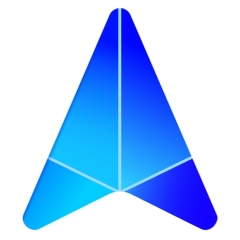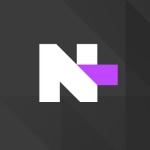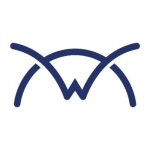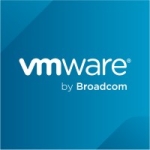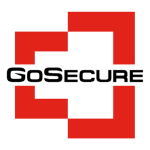What is our primary use case?
I am with an IT MSP or IT Managed Services Provider. We have clients who allow us to provide their IT services. We provide services for desktop support and all the way up to network administration, technical projects, and so forth.
We use Field Effect MDR for our clients as well as for ourselves, so we use it internally as well as resell it to our IT MSP clients.
How has it helped my organization?
Field Effect MDR is backed by experts who are constantly monitoring for attacks and risks. It is extremely important and relevant to us. Field Effect or at least the core team, comes out of offensive security with nation/state actions. That is very practical knowledge. Being able to take that and understand both from the offensive side and the defensive side is valuable. Knowing how to counter those offensive acts and how to anticipate them puts them in a great spot to understand the cyber landscape. We are able to stay on top of trends within that cyber landscape. Because they have intelligent sources or habits that they have developed from their history, it is very effective. We have a lot of trust in the leadership of Field Effect, the line managers, the SOC in charge, the forensic teams, and the incident response teams. We have very high confidence that our interests are highly regarded by them, and they are trying to protect our business, our interests, and our clients. They are also able to steer us in great directions.
Even though they have such deep industry experience, they are willing to collaborate and listen. This is something that I would not have expected from a team like Field Effect. On the partnership side, we have used other top-tier EDR or MDR products. The products are great, but the partnerships in some cases have been just average. In some cases, they have been antagonistic, so from Field Effect, I was not expecting much, particularly having learned about their background. However, when we got working with them, it was just a revelation of how open they were to our situation and our particular needs, which are very different from their own priorities. They have been willing to work with us within reason. They have a development roadmap that they have to follow, but whenever we needed critical things to make Field Effect MDR a part of our core business and a successful part of our core business, they were very willing to listen. In many cases, they also acted on the requests. It has been a fantastic and very effective partnership.
We use its tagging of security threats as actions, recommendations, or observations. It is critical. We have used a lot of platforms, We have used the second-tier ones and also the top-tier ones in Magic Quadrant. The main issue with all of those platforms is noise. How do you improve the signal-to-noise ratio so that you are not spending a lot of your senior security analyst's time triaging non-actionable tickets, events, or alerts and they can focus on those truly actionable things that might require some level of direct incident response? With other platforms, including other top-tier platforms such as SentinelOne or CrowdStrike, we would get a lot of false positive notifications, and cutting through the noise was difficult. With Field Effect, because they use the ARO system of actions, recommendations, and observations, they have severity levels within each of those bands. I am not sure, but I believe there are five bands between each of those. We use a system called ConnectWise PSA as our ticketing system, so we are able to insert workflow rules and other automation assistance so that we can do some pre-filtering of the alerts to make sure that we direct all the high-priority notifications to our SOC team. We can either auto-close lower priority or lower severity notifications because they are non-actionable or are more informative, or we can funnel them to our regular help desk. A notification about your web browser being out of date does not need to go to the SOC. That can go to the regular service team to help walk the client through an update or do the update for them and things like that, so AROs are critical. It definitely allows us to maximize our limited and expensive resources so that we are focused on truly actionable things and not waste time on false positives.
As of now, Field Effect MDR gives us a single cybersecurity product that proactively protects all our threat surfaces, but who knows what may happen in the future. Field Effect MDR is holistic. With this one product, you get the host-based stuff. You get the network appliance. You get cloud monitoring. You get the DNS firewall. It is a much simpler product to handle from a billing perspective. From an account management perspective, the full version of Field Effect MDR is effective and easy to manage. They also have other versions, but the full product version is a one-stop shop. There is an add-on that they have probably introduced over the last year or maybe six months. It is for cloud retention. Field Effect MDR in many aspects is a SIEM, but they have not exposed all the traditional capabilities of SIEM, namely the dashboarding side or the user-facing side. It also lacked the ability for a SIEM to be a generic log aggregator or a log ingestion sync of any source of log data. They have now added that capability where you can add on log retention services if you need it for compliance or insurance or just your own digital forensics requirements. By default, it retains its own telemetry for 90 days, but if an organization wants to retain logs for 360 days or longer for compliance and data retention, they have a service for that. That is an add-on, but the core platform with its 90-day retention is usually acceptable to the majority of our clients.
Field Effect MDR most certainly helps our security team save time. It does that passively via ARO classification. The Field Effect SOC is doing its job through machine learning, human analysts, and other heuristics to make sure that events are categorized as best as they can. We can leverage their deep experience, which makes it much easier for my team. When we get an alert via Field Effect MDR, it is already packaged as an action, a recommendation, or an observation. When we get an action of medium or higher severity, that automatically goes to my company's SOC for some triaging and analysis to determine whether we need to spin up an incident response or what the proper response is to that notification. Lower-scored items, such as observations, recommendations, and low severity or priority actions, go to a SOC coordination team, which will also do some less technical triage to classify them, or it will be handled by some of our automations. The fact that AROs are being so effectively and correctly targeted allows us to focus our most senior, most expensive, and most skilled resources on things that actually matter.
We also gain efficiencies because the Field Effect SOC is collaborative. We do not just get an ARO. We are also able to initiate communication. If we have an action or event that we want to follow up on, be it an action, recommendation, or observation, we can request help. If my company SOC needs some guidance because we are not quite sure, or it is on the bubble of being actionable versus non-actionable and we want a second opinion before we close a ticket or spin up an incident for the response team, we can request help from the Field Effect SOC. They collaborate with us and explain the logic behind why they classified something like this. They listen to our points, perspectives, and considerations. They work with us to figure out whether it is something that we need to worry about, or it is something that we can defer or ignore. That is extremely helpful. With some of our other partnerships on technology products, including security products, it has been very difficult to get this level of effective collaboration from the vendor. That has been fantastic. That has allowed us to accelerate our plans. Initially, we were thinking about using Field Effect MDR only for certain clients who have purchased a higher tier or premium security service, like an MSSP service specific to security and compliance. However, given how scalable Field Effect MDR is through those efficiencies built into the platform, into their classification system of events, and indirect staff augmentation via their Field Effect SOC, we have now made Field Effect MDR the standard security platform for all of our clients, even the ones who are only on core IT support plans.
Field Effect MDR informs us of the threats that matter and how to address them. AROs are very detailed. A lot of security platforms provide that detail, so I do not know if that is especially unique in the Field Effect's case, but it is certainly effective. AROs are very well-detailed, and they describe which event triggered the alert. They explain why it is of interest but not an actual problem. They also detail the steps to remediate, mitigate, or dismiss a particular alert. They are very effective from that perspective.
They also provide us with bulletins. We have been lucky so far. None of our clients have been subject to any sort of rising threat. However, we would not necessarily know about it unless we are paying attention to security forms and other information sources. Field Effect is one of those sources. When they start to see a negative trend, they alert their community. As a channel partner of Field Effect, we get alerts, warnings, or notifications on those emerging threats. We can then alert our SOC and pay attention to some of the indicators of compromise that might not be flourishing into a full attack but are indicative of attack precursors. Those advanced alerts of emerging threats are key. Field Effect is attempting to keep us informed as a channel partner. I do not know how true that would be for a direct customer of Field Effect.
As a channel partner, we also get visibility into their development roadmap. We have influence over that roadmap. Understanding what is coming down the line in terms of feature enhancements, feature improvements, new features, new capabilities, and new services is great for us. We are a decently sized IT MSP with a growing set of MSSP services. We cannot always turn on a dime, so advanced notice, particularly in terms of forthcoming items, is very key. It allows us to help make sure that our various teams—technical teams on the SOC or the service delivery side, client-facing teams such as our account management teams, our VCIOs, our VCSOs, and marketing team—are working in a highly synchronized or collaborative manner. They can make our new services and offerings as successful as possible with minimal friction in our particular marketplace.
What is most valuable?
It is hard to take them in isolation. It is a security product, so it is all about defense and depth. You cannot be monolithic, so you have to be holistic, and that is what Field Effect MDR is. It starts with their host-based agents, their EDR agents, which are very capable, but those are bolstered by network compliance, which does network intrusion detection. We are getting visibility over the network, not just for those hosts that have a Field Effect EDR agent but also things like the Internet of Things, guest networks, or rogue devices. We definitely have visibility into all network traffic, which is very cool. They also provide a DNS firewall, so that is pretty key. These days, with zero trust, you have to assume a breach at some point. It is sad but true. Even folks like CrowdStrike, who are not necessarily getting compromised, are falling victim to their own internal processes, so having multiple layers of protection is certainly beneficial. With a DNS firewall, even if something were to go haywire, such as an intruder breaches the perimeter and gets onto an endpoint, or somehow the endpoint itself fails to be effective, we still have the ability to block those command and control hubs. That is pretty key.
Cloud monitoring is another thing that we found valuable in addition to host endpoint protection. We also have cloud monitoring in addition to the host-based agent, the secure DNS, the network intrusion detection, and the network compliance that sits on-prem monitoring all traffic. We are able to ingest all the events for all the top services, such as Microsoft 365, GCP, AWS, Dropbox, Salesforce, and ServiceNow, and make sure that we are looking at the entire distributed footprint of an organization and not just a particular endpoint or a particular office, so it is very comprehensive.
On top of all of that telemetry being captured, we have the Field Effect security operation center. Their SOC analysts are awesome. They are very flexible in terms of particular rules, which might change from organization to organization. They are able to take those particular provisioning or service definitions and still remain very responsive and according to our service level agreements. We found their SOC to be incredibly engaging. That is on the service delivery side.
We are a channel partner of Field Effect. We deal with a lot of products, but Field Effect has certainly distinguished itself as being a stellar partner. They are not just providing us with fantastic products, which are highly effective, they are also helping us. They are helping our clients. Their partner team or their marketing team helps us with go-to-market activities. It has been a fantastic relationship.
What needs improvement?
The interface is perhaps the weakest part of the entire platform, and that does not mean that it is deficient. It is just not as optimized and as efficient as other aspects of the platform. Given their background of coming from the offensive security side of things, understanding how attackers are going to operate, and having played that role in their previous careers, they have built a great platform that understands what to look for. Their threat detection, rules, and their correlation engine are amazing. They have very high accuracy. That is built throughout the platform. From the technology side, because of their experience, they know what to prioritize in terms of their development roadmap, so they get the best features out as quickly as possible, which is fantastic. There is comfort in knowing that our protected environments will be well safeguarded by the entire platform, including their security operation center.
The weak point, particularly as an MSP, because we have multiple IT clients, is that we need a multi-tenant type of interface. We need a single pane of glass that allows us to manage all of our clients, including our own tenant for our own internal use. Their web console has seen some development over the past couple of years. Their focus was perhaps not as much on the user-facing side of things as it was on the core technology or the actual cyber defense side of things, so we have had some points of challenges over the past couple of years. Over the last six months, however, there have been some pretty drastic positive changes to the user interface for the web console or the web admin console. The interface is a lot better, but there are still some gaps that we would love to see getting filled. For example, we would like to be able to export all data grids to CSV so that we could bring them into some other format to do data analysis outside of the web console. That is still a bit hard to do. However, they have added so many other quality-of-life, user efficiency, and multi-tenant management features over the last six to nine months that the interface is now much better. It is a highly usable interface now.
Field Effect MDR is a compelling platform because it is not monolithic. It is distributed, and it is layered. You have the host, DNS, network, and cloud. They have something called SEAS or Suspicious Email Analysis Service, which is awesome because everyone is suspicious of emails, perhaps even multiple times per day. If you multiply that by multiple clients and the number of users per client, you can imagine the volume of tickets that we get within our company to know if it is a phishing email. Having that service from Field Effect where they ingest an email reported by an end user and do the analysis to determine whether to trigger some sort of incident response action or to ignore it because it is legitimate. Having that is amazing. Where they have a gap currently is that they have their telemetry coming from so many different areas of an organization. Field Effect MDR is basically collecting all the data that a SIEM does. I guess to the Field Effect SOC, Field Effect MDR is a SIEM, but a lot of those SIEM capabilities are not fully exposed to end customers or MSPs, such as MSSPs or MSPs like my company. It would be awesome if somewhere on the development roadmap, they continue to evolve the platform and expose more of the native SIEM functionality so that it is available to end customers and not just to the Field Effect SOC.
The UI and SIEM capabilities are two main things that I would love to see. That would make it a slam dunk. They would then cover everything. They have a holistic security defense platform. They have log retention. They have MDR capabilities. Those are massive checklist items in an organization's cyber defense footing. An organization looks for things like compliance assessments, cyber insurance, and cybercrime coverages.
I would certainly love Field Effect to continue to be very judicious in expanding its precious development resources in the pursuit of market competitiveness. I imagine their competitors seeing the success that Field Effect MDR is having with their holistic approach, so I would expect more of that from their competitors. I see them providing a one-stop-shop type of solution. It would be incumbent for Field Effect to continue driving the initiative by expanding its universe of products and services. It would be interesting to see other elements from them that lead to good cyber hygiene. As an IT MSP or MSSP, one of the big challenges for us is a simple thing like patching. We have tools where we can pretty confidently patch operating systems such as Microsoft Windows, Linux, and macOS, but we are not able to patch third-party applications with a high success rate. That is due to a host of causes, some of which are user-driven but a lot of them are platform-related. It would be awesome if Field Effect started to include features like patch management into the mix so that we could leverage the ubiquity of Field Effect MDR to tackle one of our highest service delivery challenges. We are already using some third-party application patching tools, but even with multiple of them in play, we are far below our desired success rate for monthly application updates. I would love to have another layer to that mix to help improve our patch compliance rate.
I have recently been exposed to an application allowlisting platform. It is very capable, and it is solving some specific needs, particularly for companies that are trying to maximize their cyber insurance spend. If you have application allowlisting deployed, some site insurers are willing to provide more coverage or reduce the premium for those clients. They see that as a very positive or defensive posture and are willing to incentivize it. Currently, Field Effect MDR does not have any form of application allowlisting capability. It would be interesting to have it added to the platform in some fashion. That would be great. The host agent in Field Effect MDR is kernel-based, so it is already well-positioned to do things like application allowlisting.
Buyer's Guide
Field Effect MDR
December 2025
Learn what your peers think about Field Effect MDR. Get advice and tips from experienced pros sharing their opinions. Updated: December 2025.
879,422 professionals have used our research since 2012.
For how long have I used the solution?
I believe it has been just over two years.
How are customer service and support?
You have occasional issues with a new hire who might be just out of training, but that is very rare. The majority of times that I contact Field Effect support, I get an analyst who not only seems to be very knowledgeable about our particular deployments but is also aware of the platform and the landscape. The analyst is able to create a nice little intersection of all of those to help provide the best direct guidance for a given situation. I found them to be very effective and responsive.
They follow the sun. If we get after-hours alerts, we are still able to get hold of Field Effect SOC analysts to help us triage or respond to high-sensitivity or high-severity events. Because we are a channel partner of Field Effect, in addition to contacting support directly, I often copy our partner success manager to keep him in the loop regarding what is going on, so we usually get a very good and fast response from Field Effect support. When we have supercritical issues that require immediate and most senior attention, it is awesome to have a champion within Field Effect who knows us. We meet with our partner success manager at least monthly, but often, it is biweekly. It is great having a champion within Field Effect who can immediately escalate issues important to us or our clients. They are great, and they are greater when we get our partner rep involved.
In terms of rating, I hate giving out tens because it does not leave room for growth. I am going through SOC 2 and HIPAA compliance certification right now. I just went through this exercise of documenting all of our vendors and all of the systems that we have running. There are over a hundred, and some of those are packaged applications that we just buy. We are just using them off the shelf. With many of them, however, it is a channel relationship where we are a partner or a reseller, and we have an account rep or some sort of extended relationship, or business development relationship with a provider. Among all of our providers, I can confidently and unconditionally say that Field Effect is the best, so based on that, I would rate them a ten out of ten.
How would you rate customer service and support?
How was the initial setup?
I was a part of our internal pilot, and I remember us taking a while to get the network appliance deployed. That was not because of Field Effect. When we first partnered with Field Effect, we were unfortunately still in the depths of the pandemic. This would have been 2022. We were just coming out of things. We wanted to do a pilot to evaluate it. We were doing our due diligence, but at the time, common shipping carriers were experiencing massive delays. There were transport delays and supply chain issues. Everything was up and down, so it took a while for us to get our appliance. That also caused a delay or lag in implementing the pilot. It was not due to any fault of Field Effect, but it took us a while to get Field Effect to the point where we could even begin to evaluate it. We finally got it installed and got a feel for it.
Field Effect MDR has multiple layers. We had just come from another tier-one Magic Quadrant solution. It was also an MDR solution, but it only allowed us to have host-based agents installed. The only thing that was on the network was an appliance to collect agent telemetry that could then feed it to a SIEM. Prior to Field Effect MDR, we had to do a bunch of things with Linux boxes and so forth. It was a one-off per client to do things like SIEM integration, whereas Field Effect, out of the box, gives us multiple layers of telemetry, host, network, DNS, cloud, and email as a trailing indicator. That immediately allowed us to have much greater visibility. We had 360-degree visibility of a protected environment. That was something we had not expected or anticipated. We probably heard it during the early demonstrations and overviews from Field Effect, but we did not fully comprehend it. When we got our hands on the platform, it was pretty evident, very early on, that the platform was superior. It took us a bit longer to then do some field testing to make sure that the technology was working as well as we thought based on what it was reporting and doing.
We then started doing some pilot tests. We did pilot tests at two clients initially and then at around five clients before we fully committed to the platform. There were upwards of 500 to 750 managed endpoints in this due diligence plus pilot phase. That was when we got to evaluate the SOC because we started getting a significant volume of alerts and AROs. We were then confidently able to say that the platform is awesome. It has multiple layers. It is distributed. It is 360 degrees. It is holistic. Their SOC is effective. They are quick. They are responsive. They are capable and competent, and they are tailored. Each client can have a different service profile, so we can adjust how aggressive or passive we want to be in a given environment based on client requirements and our requirements. That took a while to discover but not due to any failings of Field Effect. It takes a while to go through all of that due diligence and all of that hands-on testing.
Within the first quarter, we were convinced of the capability of the platform. So, after an initial sales cycle or a partnership cycle of maybe two to three months, and then another month and a half of just COVID-related shipping supply chain delays, we could get everything we needed to set up our initial due diligence environment.
What's my experience with pricing, setup cost, and licensing?
A top-tier competitor to Field Effect in Magic Quadrant that we had been using until our switch to Field Effect was a great product, but each capability had an additional charge. We had to license modules separately, and each of those add-ons had to be added onto its own consumption and agreement. It was a nightmare from a billing perspective because we had multiple agreements, and each one had a jagged anniversary or a renewal anniversary. It was a nightmare, whereas Field Effect MDR is one product.
What other advice do I have?
To a colleague who is interested in a cybersecurity solution but says they have never heard of the vendor Field Effect, I would ask if they have heard of CrowdStrike. Have they heard what CrowdStrike did just a couple of weeks ago? Name recognition is not necessarily the be-all and end-all. I am a motorcyclist. I am a car nut. I watch F1 which is a walking billboard of security providers. You have Darktrace. You have CrowdStrike. You have even Bitdefender out there. You have Webroot out there. You have all these folks out there. Some of these are very recognized brands or names. Are they effective forever? No.
We have had very well-recognized platforms that were horrible to operate. They were either ineffective at doing the job they were supposed to do, or they were not highly interoperable, causing lots of problems with particular operating systems. I remember an issue with the Mac platform with a very low-cost and ineffective platform. That caused us to abandon it and use a different platform for Macs because it was highly problematic. Name recognition is great, and one day, Field Effect might be up there as one of those top-tier brands where upon seeing the Field Effect logo, people would say that they are in security, they are top-tier, and they are in Magic Quadrants. It is just a matter of time.
I would encourage people to do their due diligence and get referrals from Field Effect about partners like me or end customers. Run a pilot. Run a proof of concept. Get the product. Run it for yourself. Try it in the field. Field Effect has been pretty generous at least to the partner community. I do not know what would happen with direct customers for this, but with their channel partners, they are very willing to allow a bit of latitude in making sure that Field Effect is the best fit for an organization. So, name recognition is great, and it helps to shorten that initial introductory meeting because you already know a lot about the company. That is fantastic, but that is merely the start of the relationship. It is not the end. It would be nice if Field Effect had better name recognition, but let us look at the merits of the platform, the capabilities, the success, and the effectiveness of the platform and base our decisions on that.
It is a highly effective platform, but they have room for improvement. I would rate Field Effect MDR a nine out of ten because they have room to grow, but where they are right now is amazing. It is so much ahead of what a lot of other Magic Quadrant providers are offering, particularly in terms of the price point, the simplicity of consumption and billing, the robustness of the partnership, the effectiveness of the partnership, and the scalability that it allows our internal team to have.
Disclosure: PeerSpot contacted the reviewer to collect the review and to validate authenticity. The reviewer was referred by the vendor, but the review is not subject to editing or approval by the vendor. The reviewer's company has a business relationship with this vendor other than being a customer: Reseller

